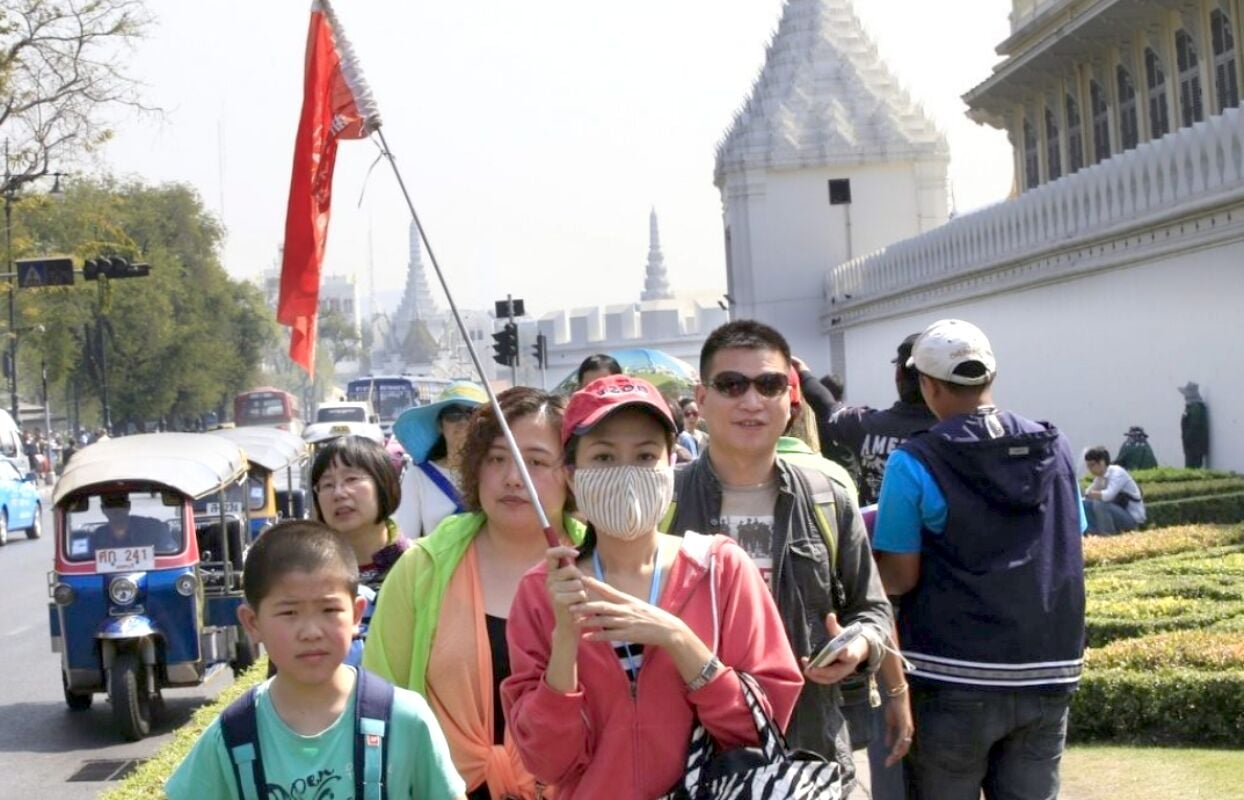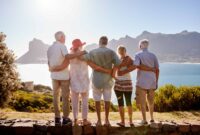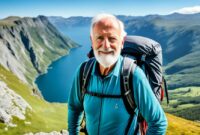Tour groups for seniors offer a unique blend of adventure, relaxation, and companionship, catering to the specific needs and preferences of older travelers. This guide delves into the diverse world of senior travel, exploring various tour types, accessibility considerations, health and safety protocols, pricing strategies, and effective marketing techniques. We’ll examine how tour operators can create enriching and memorable experiences for this valuable demographic, focusing on inclusivity and providing exceptional customer service.
From escorted tours providing comprehensive support to independent travel packages offering greater flexibility, we will analyze the advantages and disadvantages of each option, considering factors like physical limitations and mobility concerns. We’ll also explore the importance of accessible transportation, accommodations, and emergency preparedness, ensuring that senior travelers can enjoy their journeys with peace of mind. Ultimately, this guide aims to provide a holistic understanding of the senior travel market, empowering both tour operators and potential travelers to make informed decisions.
Health and Safety Considerations
Prioritizing the health and safety of our senior travelers is paramount. This section details potential health risks associated with travel, mitigation strategies, emergency preparedness, the role of insurance, and procedures for handling medical emergencies. Our aim is to provide a safe and enjoyable experience for everyone.
Potential Health Risks and Mitigation Strategies
Senior travelers may face unique health challenges during tours. These can include exacerbation of pre-existing conditions like heart disease, respiratory problems, or mobility issues. The physical demands of travel, such as long flights, extensive walking, and changes in climate, can also pose risks. To mitigate these risks, we carefully select tour itineraries that minimize strenuous activities and incorporate ample rest periods. We also encourage participants to consult their physicians before the tour to discuss any potential health concerns and obtain necessary medical clearances. Furthermore, we provide detailed pre-trip information outlining the itinerary, accommodation details, and daily activity levels, allowing participants to prepare accordingly and manage their expectations. Finally, we ensure easy access to medical facilities and personnel throughout the trip.
Emergency Preparedness Plan
A comprehensive emergency preparedness plan is crucial for senior group travel. This plan includes a detailed list of emergency contacts (local medical facilities, emergency services, tour operator, and next of kin), readily available first-aid kits stocked with essential medications and supplies specific to the group’s needs, pre-arranged transportation options for medical emergencies (ambulance service contracts), and designated personnel trained in basic first aid and CPR. The plan also outlines procedures for communicating with participants and their families in case of an emergency. For instance, a specific person would be responsible for contacting family members and providing updates while another focuses on coordinating medical assistance. A regularly updated contact list, accessible to all staff members, is maintained. A pre-determined meeting point is established in case of unexpected situations requiring group assembly.
Role of Travel Insurance and Medical Assistance Services
Comprehensive travel insurance is essential for senior travelers. It provides coverage for medical emergencies, trip cancellations, lost luggage, and other unforeseen circumstances. The insurance policy should specifically address pre-existing conditions, offering appropriate coverage and outlining any exclusions. We recommend selecting a policy that includes medical evacuation coverage, given the potential challenges of transporting seniors in remote locations. Medical assistance services provide 24/7 access to medical advice and assistance, facilitating communication with local medical providers and ensuring prompt and appropriate care. This service acts as a crucial link between the traveler, their family, and medical professionals, providing crucial support and coordination in times of need. For example, if a participant experiences a sudden illness, the medical assistance service can help locate and arrange appointments with local doctors who speak English or the participant’s native language.
Procedures for Handling Medical Emergencies
Our procedures for handling medical emergencies prioritize the immediate safety and well-being of the affected individual. The first step involves immediate assessment of the situation and contacting emergency medical services. Designated personnel will administer first aid as needed, while others will notify family members and the tour operator. Detailed medical information for each participant, including pre-existing conditions and emergency contacts, is readily available. Following stabilization, the individual will be transported to the nearest appropriate medical facility. Throughout the process, clear and consistent communication is maintained with the affected individual, their family, and the tour operator to ensure everyone is informed and supported. Post-emergency debriefings are conducted to evaluate the response and identify areas for improvement in future emergency preparedness.
Marketing and Promotion
Reaching the senior travel market requires a targeted approach that acknowledges their unique needs and preferences. Effective marketing strategies must emphasize trust, reliability, and ease of access to information. Understanding their communication habits and preferred media is crucial for successful campaign deployment.
Effective marketing channels for reaching the senior travel market include print advertising in publications targeting this demographic, such as AARP The Magazine or retirement community newsletters. Digital marketing, while seemingly less intuitive, can be highly effective. However, it needs to be adapted to senior users’ comfort levels with technology. Consider using simple, large-font websites and clear, concise messaging in online advertisements. Social media marketing, while potentially effective, requires a carefully considered strategy, focusing on platforms seniors actively use, such as Facebook, and avoiding overly complex or visually cluttered campaigns. Finally, partnerships with organizations catering to seniors, such as retirement communities or senior centers, can provide access to a highly targeted audience.
Marketing Materials for Senior Travelers
Brochures should feature large, high-quality photographs showcasing comfortable accommodations, accessible facilities, and engaging activities. Text should be easy to read, using a large, clear font with ample white space. Information should be concise and focus on key benefits, such as comfortable pacing, accessible transportation, and well-planned itineraries. For example, a brochure could highlight “Stress-Free Travel: Enjoy worry-free excursions with our dedicated support team,” or “Accessible Adventures: Explore stunning locations with ease, thanks to our wheelchair-accessible transportation and accommodations.” Website copy should mirror the brochure’s approach, prioritizing readability and clear, concise language. Use bullet points to highlight key features and benefits. Include high-resolution images and videos showcasing the travel experience. For instance, a website section might feature a video testimonial from a satisfied senior traveler discussing their positive experience.
Testimonials and Case Studies
Testimonials and case studies are powerful tools for building trust and credibility. Featuring positive reviews from previous senior travelers builds confidence and social proof. These testimonials should be genuine and relatable, focusing on aspects seniors value, such as safety, comfort, and ease of travel. For example, a testimonial could read: “As a senior traveler, I was hesitant about booking a group tour. However, [Tour Company Name]’s exceptional service and attention to detail made my trip unforgettable. The itinerary was perfectly paced, the accommodations were comfortable, and the guides were incredibly helpful and friendly.” Case studies can showcase successful trips, highlighting specific aspects such as accessibility accommodations, medical assistance provided, or the overall positive impact of the trip on the traveler’s well-being. A case study might detail how the tour company adapted its itinerary to accommodate a senior traveler with mobility limitations, resulting in a fulfilling and enjoyable experience.
Illustrative Examples
This section provides detailed descriptions of two distinct senior tour experiences, emphasizing the sensory aspects and the overall emotional impact on participants. We aim to showcase the diversity of experiences possible and highlight how carefully curated itineraries can enhance the enjoyment and well-being of our senior travelers.
The Tuscan Culinary Journey
This tour immerses participants in the sights, sounds, and tastes of Tuscany, Italy. Imagine rolling hills blanketed in vineyards, the scent of sun-ripened tomatoes and freshly baked bread filling the air. The gentle sounds of Italian conversation mingle with the chirping of cicadas. Each day begins with a hearty breakfast of fresh pastries and strong coffee, followed by visits to local farms where participants can witness the cheese-making process, feeling the smooth texture of the curds and tasting the rich, creamy result. Evenings are spent enjoying traditional Tuscan dinners, savoring the flavors of handmade pasta and locally sourced meats, accompanied by regional wines.
The atmosphere is relaxed and convivial, fostering a sense of community among participants. The emphasis on sensory experiences, combined with the slower pace of the tour, promotes a feeling of calm and rejuvenation. Participants often report feeling a renewed appreciation for simple pleasures and a sense of connection to the local culture. The vibrant colors of the Tuscan landscape, coupled with the warmth of the people and the delicious food, leaves a lasting positive emotional impact.
The Canadian Rockies National Parks Adventure
This tour focuses on the majestic beauty of the Canadian Rockies. Imagine breathtaking views of snow-capped mountains, the crisp, clean air filling your lungs, and the refreshing scent of pine needles. The sounds of rushing rivers and birdsong create a serene atmosphere. Participants will feel the smooth, cool texture of glacial rocks as they take guided walks through pristine forests. Each day offers opportunities to enjoy the tastes of local cuisine, from hearty breakfasts to delicious wild salmon dinners. The comfortable accommodations provide a relaxing base for exploration.
The atmosphere is one of awe and wonder, inspired by the grandeur of the natural landscape. The overall mood is invigorating yet peaceful, fostering a sense of tranquility and a deep appreciation for the power and beauty of nature. Participants often express feelings of awe and inspiration, a renewed sense of vitality, and a profound connection to the natural world. The stunning vistas, combined with the invigorating physical activity (within appropriate limits for seniors) and the camaraderie amongst fellow travelers, leave a lasting and positive emotional imprint.
Epilogue
Planning a fulfilling and safe travel experience for seniors requires a thoughtful approach that balances adventure with comfort and addresses potential health concerns. By understanding the diverse needs of this demographic and implementing appropriate measures, tour operators can create memorable journeys that enrich the lives of senior travelers. This guide has highlighted the key aspects of organizing and marketing senior tour groups, emphasizing accessibility, inclusivity, and exceptional customer service to ensure a positive and rewarding experience for all involved. The focus on value for money and transparent communication further strengthens the trust and confidence essential for successful senior travel.




